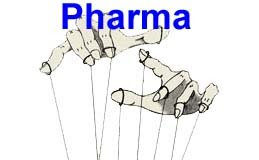Pharmaceutical spending on Direct-to-Consumer (DTC) advertising is at an all-time high, with the 2006 budget surpassing the 2005 budget by over 9%, according to TNS and reported in Brandweek (see “Findings: Drug Ad Spending Up Significantly“). At this rate, the DTC spending may soon surpass spending for promotion to physicians—including sales rep visits! If you don’t believe me, see “DTC Spending Set to Surpass DTP Spending” in the latest PMN Supplement: “DTC in the New Era.” There, you will find some interesting numbers and projections based on those numbers. [Reprint purchase required.]
Before you get all excited, however, realize that practically all and maybe more of that gain of $400 million is due to just two drugs–Lunesta and AmbienCR, which together spent $353 million on DTC through September, 2006 ($219 million for Lunesta and $134 million for AmbienCR)! If that rate of spending continued through December, the total would be $471 million for these two drugs.
With this amount of spending on DTC, pharmaceutical marketers have to ask themselves how much is being wasted and how they can improve DTC efficacy and return on investment, which is generally considered to be declining. “DTC in the New Era” includes a review of several techniques for optimizing DTC and improving its outcomes. These ideas are gathered from experts in the field.
Only by measuring the proper indicators can you really optimize your DTC campaign once the mix has been determined. In the article “Optimizing DTC Performance” (pg. 25, DTC in the New Era), TNSfyi, a product forecasting and healthcare/pharmaceutical modeling division of TNS Healthcare, explains its methodology. Ken Sobel, Senior Vice President at TNSfyi, cites the two most common DTC mistakes. Before you go and buy this Supplement to find out the answer, I invite you to take the following poll, which includes Sobel’s choices as well as a few I have heard from other experts:
| The Most Common DTC Mistakes Are: | |
| Hiring the wrong agency | |
| Overspending against the opportunities | |
| Focusing too much on TV | |
| Going to market with subpar copy quality | |
| Waiting too long to begin the campaign | |
| Mimicking the competition in terms of mix | |
Another perspective is presented in the article “Maximize DTC Effectiveness: Understanding Drivers of Patient Behavior” (pg. 29, DTC in the New Era). According to the study reviewed in that article, in which 6300 consumers completed telephone interviews, DTC awareness, across all disease states, was at a 4-year high, at least up to 2002. In 2002, with a $2.6 billion DTC media spend, 75% of sufferers recalled seeing an ad for their condition.
With almost double the spending on DTC these days, I am sure that DTC awareness among consumers is even higher than it was in 2002.
The study also suggests that a large percentage of consumers that visited physicians after being exposed to DTC requested prescriptions for products advertised. Whether or not this trend continued, the numbers are at odds with another recent study by CommonHealth, which concluded that only a small fraction of consumers asked their physicians for a drug they saw advertised (see “Advertisers Don’t Know How DTC Works. Say wha?“).
DTC must also adapt to the new world in which blockbuster drugs are few and far between. The article “The New Branding Model: From Blockbusters to Targeted Therapies” (pg. 21, DTC in the New Era), which presents the thoughts of Francoise Simon, Ph.D., professor of marketing at the Columbia University Graduate School of Business and co-author of the book “Building Global Brands: Taking Biotechnology to Market,” suggests that new therapies require a new approach to DTC. More focus needs to be paid to patients as opposed to consumers. This is also an argument for expanding direct-to-patient spending online (see “Pharma Online Direct-to-Patient Spending”; pg. 9, DTC in the New Era).
More effective DTC may require out-of-the-box thinking these days when there are so many messages competing for consumers’ attention. Public relations, for example, is playing a greater role in marketing. For more on this, see the articles “Out-of-the-Box Marketing: Will It Work for Pharma?” (pg. 31, DTC in the New Era) and “PR: Advertising by Other Means” (pg. 34, DTC in the New Era).
I think DTC advertising is set for major changes in light of public criticism, but also in reaction to the changing reality of the marketplace where there is less need for a one size fits all solution. DTC must evolve and marketers must pay more attention to measuring and improving its effectiveness. Otherwise, billions of dollars will continue to be wasted.
Happy New Year!









![6 Digital Tools at the Center of Healthcare Digitalization [INFOGRAPHIC]](http://ec2-54-175-84-28.compute-1.amazonaws.com/pharma-mkting.com/wp-content/uploads/2021/04/6DigitalTools_600px-100x70.jpg)




